The cart abandonment email is one of the most powerful tools for increasing conversion rate, customer acquisition, and even business revenue… overnight, with just a single campaign. It’s the low-hanging fruit of email marketing optimization. And you must take advantage of it.
But… how do you know if you’re doing it right?
Unfortunately, everyone has a cart abandonment problem. Baymard Institute compiled data from 41 studies across the web and found that the average cart abandonment rate is a painful 70%. This means that, on average, 70% of people who add a product to their cart don’t finish their purchase.
Ouch.
But there’s good news. 40% of cart abandonment email campaigns get opened, 21% get clicked, and 50% of people who click, purchase.
The problem is cart abandonment, the solution is using an effective cart abandonment email. In this article, we’re going to show you how to create the best possible campaign for recapturing those dodgy customers.
Let’s start with the subject line.
Cart Abandonment Email Subject Line
The subject line of your cart abandonment email needs to do at least these three basic things…
- Catch the person’s attention.
- Tell the subscriber what’s inside.
- Be consistent with the rest of the subscriber’s experience.
Maybe you’re thinking, Well yeah — those three things apply to every email subject line. And you’d be right. But it’s important to nail the basics before we get into other tips and tricks.
Think about the implications of those three qualities for a minute. That means you’re trying to catch the subscriber’s attention without tricking them, using misdirection, or being dishonest. You catch their attention, but you tell them honestly what the email is about, and you do so in a way that is consistent with the rest of their experience so far.
That’s extremely important.
Consider the subject line, “Oops, did something go wrong?” A marketer might think that subject line is pure gold — it’s enticing, attention-grabbing, and darn-near impossible not to click.
But let’s be honest… it’s not being totally… well, honest.
And while the attention-grabbing element of that subject line will likely increase open rate, click-through rate might suffer when people open and find that it’s not something as dire as they might have expected… you just want them to finish their purchase (ugh… typical).
One case study of Buy Fencing Direct measured the effectiveness of different subject lines, including our above culprit (“Oops, did something go wrong?”).
Here were the results.
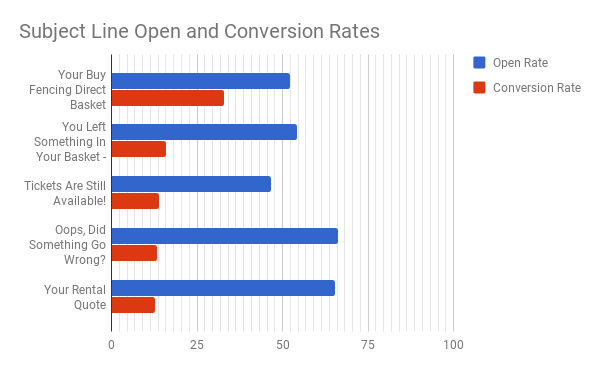
Unsurprisingly, “Oops, did something go wrong?” received the highest open rate, but also the second-lowest click-through rate.
“Your Buy Fencing Direct Basket,” on the other hand (perhaps the most honest and straightforward of the subject lines tested) received the second-lowest open rate but the highest click-through rate by a long shot. This indicates that this subject line got the most relevant and interested subscribers to open the email.
And that’s not a one-off case study result. Another test by AWeber of 20 subject lines sent to 45,000 subscribers found that clear subject lines resulted in 617% more traffic than creative subject lines.
In other words, clarity and honesty get results. Not being honest with your subject line (“Did something go wrong?” vs “You left something in your cart”) or being overly creative (“AWeber’s AWesome Anthony A.” vs “Grow Your Email List 99% Faster: How One Site Did It”) could encourage opens from people who aren’t interested and discourage opens from people who are. For that reason, clarity is often far more powerful than cute or creative marketing tactics.
That said, intentional humorous misdirection can certainly increase open rate and click-through rate if the message fits your brand image.
For example…

Additionally, in one case study, Money Dashboard changed their email subject line from “What is your opinion here?” to “Put us out of our misery” and received 228% more engagement.
But there’s a difference between being intentionally funny or entertaining with your subject line and trying to be deceptive. The former delights subscribers and the latter frustrates them.
It’s up to you to determine what type of messaging best fits your brand image — just make sure your audience doesn’t feel hoodwinked after they open your email and that your subject line catches the attention of the right people, those who actually want to finish their purchase.
Here are some big-brand, high-performing cart abandonment email subject lines you can steal or tweak for your own campaign.
- Don’t miss out! Your cart is expiring soon… (Honest)
- Empty your cart with 20% off (Bonobos)
- The price dropped for something in your cart (Target)
- Heading out without checking out? (Huckberry)
- Did you forget something? (Casper)
- Your cart’s loaded and ready to go (Adidas)
- Cart reserved (with the best offer available) (Society6)
- Your basket is having abandonment issues (Jack Wills)
- You’re nearly there (Virgin Atlantic)
Cart Abandonment Email Design
Before someone reads your abandoned cart email headline, text, and CTA, they’re going to notice something else, almost instantaneously and without thinking about it; your email design.
According to Canadian researchers who flashed webpages in front of test subjects, people form subliminal judgments about their like or dislike of a page within one-twentieth of a second. And if it’s true for webpages, it’s also true for email design.
We’re not telling you to create some unique, flashy, or special design for your cart abandonment email. Just the opposite, in fact. Make your cart abandonment email design visually similar to all your other emails — above all else, the design should immediately indicate that the email came from you.
Consider the basic, on-brand, and intentional cart abandonment email design of companies like Beardbrand…

Dyson…
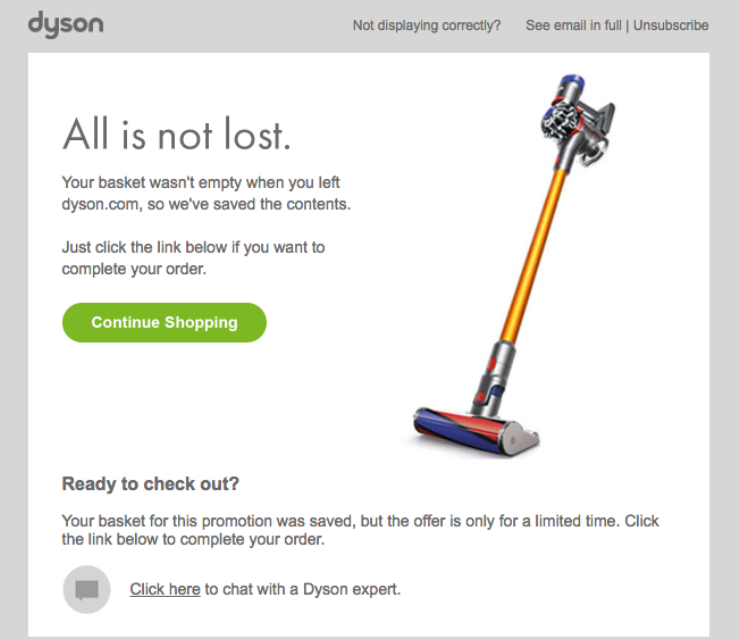
Or 23andMe…
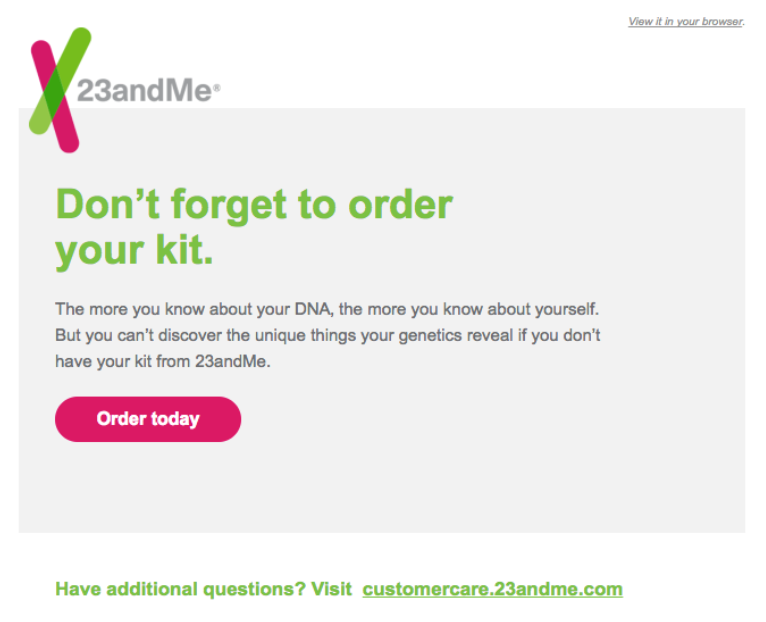
The point here is to keep your cart abandonment email design simple, on-brand, and consistent with your other email campaigns. When subscribers open, they should immediately recognize who the email came from.
Cart Abandonment Email Text & CTA
Assuming that you nailed the subject line and that your design is on-brand, the people who clicked are now going to read your headline, text, and CTA — they’re going to start deciding whether they want to finish their purchase or not.
It’s in your best interest to use this text to convert people who are most likely to purchase, not use it to convince someone who was probably never going to purchase in the first place.
Assuming that your checkout process doesn’t tack-on unexpected shipping costs, fees, or is technologically challenged, those promising buyers will likely fall into three categories…
- The person who abandoned because of technical issues — This is probably the smallest percentage of people.
- The person who abandoned because they want to purchase later — Urgency can come in really handy here.
- The person who abandoned because they’re still thinking it over — This person will usually buy if you add a little incentivization and/or risk reversal.
But let’s be clear; the person who won’t buy is the person who abandoned their cart because they changed their mind and simply don’t want to purchase (a survey by Email Audience found that 34% of people abandon their cart because they were “just looking”) — don’t waste the headline, text, and CTA of your abandoned cart email trying to convince someone who probably won’t be convinced.
Use it to target the above three categories of people.
The best part is, by targeting people who actually want to purchase from you, you don’t have to overthink the sales copy. Consider the simplicity and straight-forwardness of effective abandoned cart emails like this…
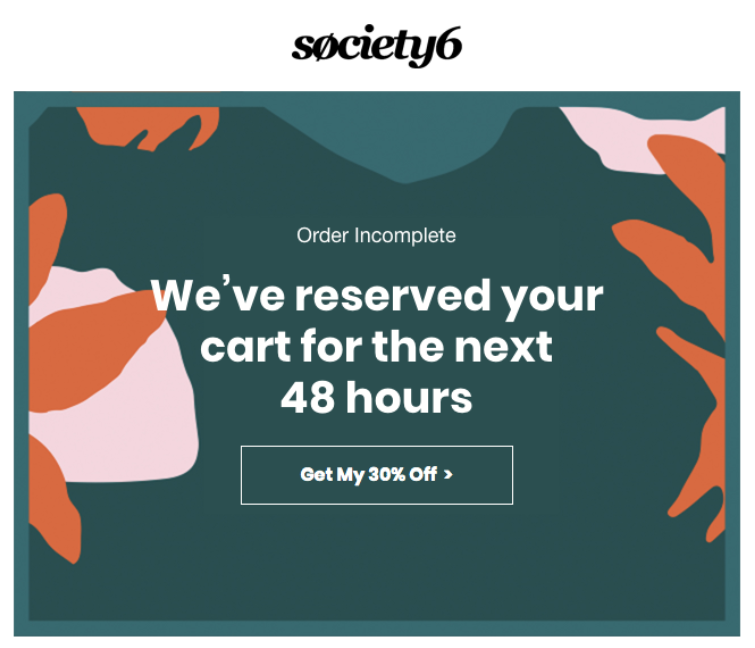
This…

And this…

Seriously — if you want to launch an abandoned cart email campaign without spending hours to craft sales copy, just keep it simple and focus on attracting the people who already want to finish their purchase.
There’s certainly something to be said for adding incentivization and risk reversal into your campaign — 57% of first-time shoppers claim they wouldn’t have made a purchase without a coupon. But you don’t absolutely need to, especially not for the first version of abandoned cart email.
However, if you’re determined to do more than the bare minimum, then read on and we’ll discuss how risk reversal and incentivization can effortlessly fit into your abandoned cart email.
Final Note About Your CTA: In your abandoned cart email, beware of having too many CTAs. Have you ever experienced analysis paralysis, where you have too many options to make a decision? Well, that can happen to your subscribers.
Multiple studies have revealed that more isn’t always better. Within the first cart abandonment email, we recommend only focussing on the product(s) that people added to their cart. In follow-up emails, you can consider adding other product recommendations.
Cart Abandonment Timing & Intervals
We’ve already discussed the importance of automating your abandoned cart email… but when should you send it and how many follow-ups should you send?
Should you send your abandoned cart email immediately after the prospect abandons? Or should you wait an hour? Should you wait an entire day? When is the prospect most likely to open your email and/or still be interested in what they added to their cart? When are they most likely to finish their purchase?
Additionally, is one email enough or should you send several reminders?
All of the sudden, creating and scheduling your abandoned cart campaign(s) gets complicated.
So, to make it easier, let’s look at the data. According to an analysis of more than 7 billion online shopping sessions (thanks to MarketingCharts), people are most likely to finish their purchase within the first hour of their abandonment. Honestly, it’s not even a competition.

That makes sense, doesn’t it? Whenever you abandon your shopping cart, it’s that first hour where you’re still considering and thinking it over — if you don’t receive a reminder during that time, it’s probably a no-go.
So your first email should go out within 1 hour of when the person abandoned their cart.
Now, don’t stop there — a second abandoned cart email sent within 24 hours gets a whopping conversion rate of 17% (emails sent 48 hours after abandonment got only 7.7% conversion rate). 24 hours later, send your second follow-up email. In this email, consider adding a bit of urgency (“Your cart is expiring”).
Those two emails are the most important to nail down. But if you want to add a third follow-up, then send it one week after abandonment. This will serve to remind the prospect of the items in their shopping cart without feeling too pushy or annoying.
Cart Abandonment Email Risk Reversal & Incentivization
Perhaps this part of the cart abandonment email’s anatomy should be labeled as “optional.” Adding urgency or other incentives to increase conversion rate works with some audiences, but not all audiences, some products, but not all products.
Before using these tactics, you should understand your audience and what they expect from your brand. Offering coupons on a luxury product can come across as desperate and “cheap,” which is the last thing you want to communicate to a list of high-end buyers. Similarly, using urgency for an expensive B2B product might not have the desired effect.
Risk reversal is the one conversion-optimization hack that we might not label as optional — dismantling the buyer’s perceived risk will help to increase sales in almost every situation.
Here are some examples of risk reversal, urgency, and incentivization done right within cart abandonment emails.
A coupon offer from Casper…
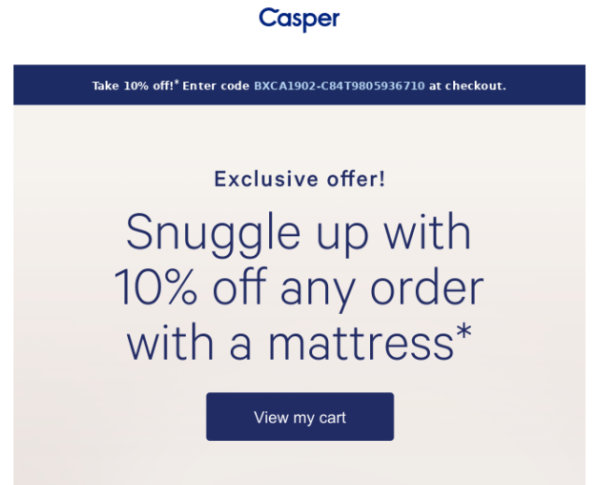
A dash of risk reversal from Nike…
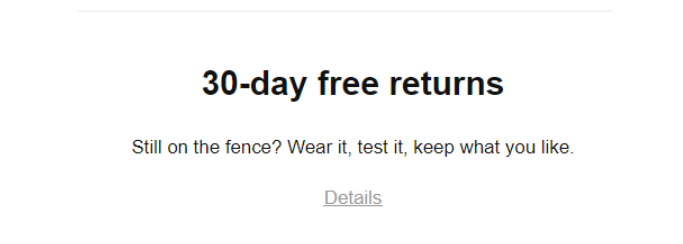
And a pinch of urgency from Huckberry…
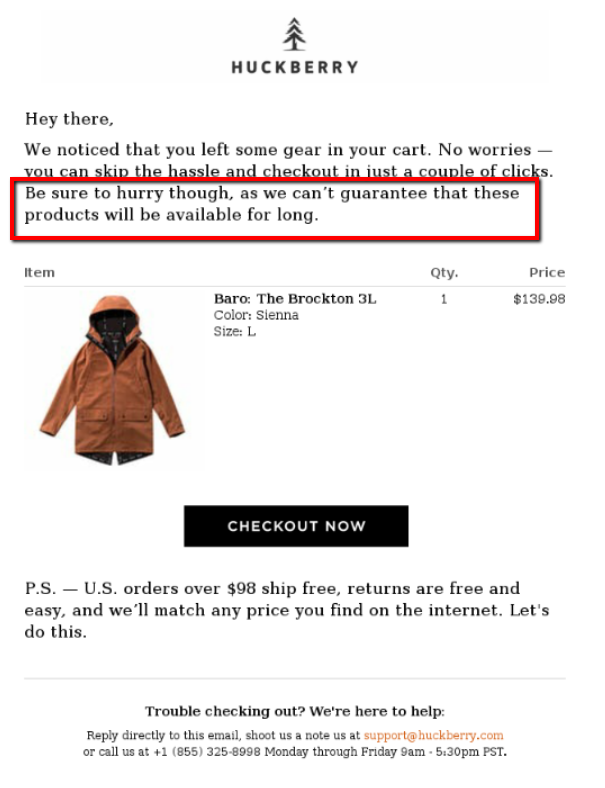
There are, of course, an endless amount of ways to add urgency, risk reversal, and incentivization to your abandoned cart email. You could put it within the subject line (“Your shopping cart is almost expired”). You could put it in the headline (“10% off for the next 24 hours”). You could add it to the bottom of the email (“30-day free returns, no questions asked”).
The choice is yours.
Ultimately, though, there’s really only one way to know whether or not your marketing tactics are increasing conversions and revenue; by testing, testing, testing.
And there’s one particular way to test email metrics that we’re fond of here at Email Mastery — that’s by using control groups. Basically, you add the incentive or risk reversal to Version A of your abandoned cart email and send it to a randomized percent of your cart abandoners. For all the other cart abandoners, it’s business as usual — no extra incentives.
Then you measure to see which group converts better, the ones with the incentives are the ones without?
Fortunately, data don’t lie.
Conclusion
You have a cart abandonment problem.
But… so does everyone else.
Rather than getting bent out of shape about it, create a cart abandonment email with a compelling and honest subject line, easy-to-recognize design, sales copy that’s optimized to convert people who actually want to buy from you, and then test different incentivization tactics using control groups (which you can learn more about over here).
Creating an effective cart abandonment email isn’t rocket science, but it is a science. And the above-outlined anatomy should help you craft a campaign that increases your conversion rate and recaptures a portion of the 70% who didn’t quite make it.
